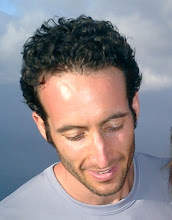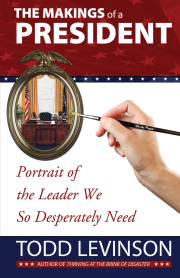(Adapted from an article written on September 8, 2007 for a national leadership newsletter)
In our modern world of perpetual change, stagnant organizations quickly fall behind, while progressive ones thrive. And with the tremendous transformations that are taking place in our global society, we are now entering into an era of change that is certain to be even more intense than what we currently experience. As a leader, you must to learn to guide your organization from depending on the ways of the old world to succeeding with the ways of a new emerging world, and this requires you to deeply understand the purpose of these kinds of social transitions, how they function, and the role you must play as a leader. Without developing an overall understanding of the world and ourselves, we are continually caught up and driven by the seemingly fickle winds of the whims of circumstance, reacting with our old patterns when those patterns no longer apply to our world. There is both a collective and individual part of that world, and leaders must integrate both into their visions if they want their organizations to thrive.
My new book, Thriving at the Brink of Disaster, goes deep to the core of the purpose and process of this kind of change, uncovering how the “revolutions” that occur in our individual and collective lives relate to the passions that move us, the ties that bind us, and the unavoidable missions we must embrace just by being here. It is a book about the nature of our world, the character of our times, and the meaning of our lives. And to begin this introductory journey, we must ask the essential question: What is change?
A seed sprouts into a plant and then blossoms into a flower. This is the process of a potential becoming actual, of an idea becoming a result, of the possibility of freedom becoming a reality through the acts of responsibility that proper development requires. But it is not only the creation of the flower that brings meaning to life. We live beyond our time not just by what we make of ourselves but also by what we contribute to the world for years to come. Once the seed becomes a flower, a new seed is protected and nurtured until it, too, is ready to venture into the world, do its unique work, and make its own contribution. The original flower eventually fades and the new seed carries on the eternal process of evolution, building upon the innovations of seeds before.
This is the constant death and rebirth – the perpetual cycles of revolution – that we experience by living in this world. And yet our physical death is not our only death. Throughout our lives, we endure infinite deaths – of our beliefs, emotions, behaviors, and possessions. And the most momentous and critical of these transitions is the change from our dependency on old structures to the creation of new ideas that are critical to our development. Master these changes, and transitions will be times of excitement rather than anxiety, driven by the brave actions of courage instead of the crisis-attracting paralysis of fear.
Individuals and societies both go through these transitions, and Thriving at the Brink of Disaster is based on the premise that our global society is now embarking on one of the greatest revolutions of time. How can we know this to be true? Well, how do we know the sun will rise every 24 hours? We know because we have experienced the revolution of day-and-night many times before, and we have noticed the similarities in the amount of time that it takes. Similarly, we’ve also witnessed major social revolutions every 250 years (the last one included the American Revolution), and now we are in the same “season” of that 250-year collective cycle. So with this “revolutionary” period approaching, what will it mean for our individual lives, our nations, and our world, and how can we learn to embrace these changes instead of waiting for them to embrace us through crisis?
The key, as always, is to expand our understanding of life and apply that understanding through action. Knowledge gives us potential power by opening us up to more options, to new choices that give us the freedom to move beyond our current obstacles, which were created by the ignorance of our old choices and have also been preventing us from living by what we truly desire. What we do with that knowledge then makes our potential power into real power. Applying this idea to our times, by understanding what creates all revolutions, we can understand the purpose of any revolution and what to do about it.
Much like the seasons of the year, social revolutions are driven by nature’s cycles of change. And like the seasons of the year, we use the cycles of social revolution to take something that is in its potential (such as a seed) and bring it into its fullest actualization (such as a flower). The way it works in a society is that we build social structures (which are like flowers) from our ideas (which are like seeds). Then, over time, we eventually need to take down or modify those structures to create space for a new progressive idea – what we call an inspiration – to flourish. Innovation leads to growth, but the driving force behind that innovation is inspiration. You can’t drive a car if you haven’t ignited the engine, and an inspiration is like that spark that makes that ignition possible.
For example, the invention of the car wasn’t itself an inspiration. The inspiration was in the bigger idea, the bigger reason, that provoked the invention – like perhaps the idea that greater mobility and connectivity can open us to greater knowledge and freedom. In this way, the car was an innovation that helped bring the inspiration to life. And at some point in the development of any idea, it will have to shatter old structures that are holding them back – like the chick that eventually grows beyond the shell of its egg.
So to effectively lead through times of change, you must be able to uncover, unleash, and direct the creative inspirations that are seeking to be expressed from within your organization. And while you do this, you must balance and unite the inspirations of your employees, your company, and your society, while knowing when it is time to move from relying on the old structure for stability to letting go of that structure so that the new idea can be free to flourish.
Realize that you are the “head.” And our head’s role is to evaluate situations through reflection in order to build greater understanding and then lead our bodies on a new path through focused intention and a new set of decisions. To know what decisions to make, you must pay attention to your current phase of development – from a seed into a plant, a plant into a flower, a flower nurturing a new seed, or the new seed being born into action. All the while, you must find a balance between maintaining the old system’s security and wisdom and embracing the innovation and courage that the new possibilities demand.
Within the problem is the solution. Within the question is the answer. As change approaches, notice the new ideas surfacing within your organization. Listen to the words being spoken. Pay attention to what is being felt. You must acknowledge where your old ways are holding you back and see where those ways can support the new developments before the old collapse. As I write in Thriving at the Brink of Disaster, be willing to give up in order to get more.
There is a time in every organization’s life when it must be willing to move beyond its central purpose of “organizing” and decide instead to brave the “disorganization” of a new, but uncertain future. It is then that freedom is increased most because energy is released from its “stuck” place in a stable structure – just like what happens when ice turns into gas. That released energy can then be reorganized into something new and progressive that will bring meaning, joy, and freedom to all who decide to be involved.
My mission in writing Thriving at the Brink of Disaster was to help prepare people for a new world that is clearly coming. We are breaking through the shell of our collective egg, and I hope that you will help me in that mission. In some way, each of us is a leader. And as a leader, you must find that balance between the new ideas of the world at large and the new ideas of your individual life. My book can help guide you through that process, helping you understand the changes occurring in our nation, those occurring within your heart, and the new person and world that will be waiting on the other side. Your life will never be the same… and I hope you can welcome that.
To purchase Thriving at the Brink of Disaster, visit:
www.inspiringrevolutions.com/thriving.php
To purchase The Makings of a President, visit:
www.inspiringrevolutions.com/presidentbook.php
To begin applying the ideas in this article to your own life, answer the questions below:
- What major life transitions, or crises, have you endured in the past? What old ideas, beliefs, emotions, and behavior patterns did you have to give up because they were outdated and causing you problems?
- What new ideas, beliefs, emotions, and behavior patterns did you choose to embrace instead? How did they help you progress as a person, and how did they become a part of your total way of life? (This is an example of how you build a new structure from a new idea.)
- What new ways did you not embrace that might have helped you? What prevented you from doing so?
- What important transitions are you currently going through? What ideas, beliefs, emotions, and behavior patterns are being challenged, and what new ones could bring your life into a better balance?
- Are you experiencing any resistance to these new ways? If so, what is preventing you from embracing them? What do you think would happen if you did? How might your life benefit if you did embrace these new ways?
- What new creative inspirations are trying to surface into your life? Can you feel them? Do you see the value in them? What inner conflicts are preventing you from developing these inspirations, and how can you see beyond them so that you can courageously and effectively move forward?
- What new principles are trying to surface into your life? Can you feel them? Do you see the value in them? What inner conflicts are preventing you from standing by and living by these principles, and how can you see beyond them so that you can courageously and effectively move forward?
- Can you see the same process of change at work in your nation and world? What new inspirations are now emerging in our collective way of life? What changes do you need to make to be a part of the new wave of social change rather than being lost with the old?
- What previously neglected principles are becoming major parts of our new social “architecture?”
- With so many changes unfolding in our society, what kind of a leader can you be for our new emerging society? Do you bring beauty, creativity, inspiration, connection, discipline, joy, faith, meaning, or any of the other core ideals that make our world so special? How can you do so now?




